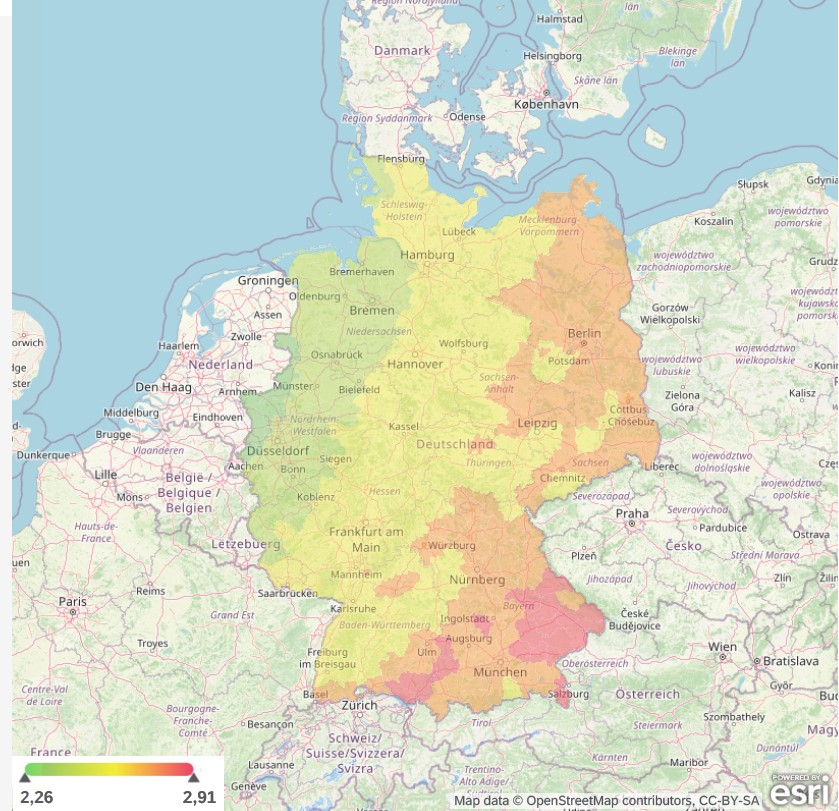Act reliably
Our Annual Report

Despite the ongoing efforts of many to protect the climate, which we continue to pursue with unwavering intensity, the climate is already noticeably changing. Therefore, in addition to reducing greenhouse gases, adapting to the unavoidable consequences of climate change is a top priority for us. We are committed to maintaining our tenants’ quality of living even under changing climatic conditions and preventing damage to buildings and open spaces. Read on to learn more about how we identify climate risks and the measures we are taking.
By implementing targeted measures to adapt to climate change, we can reduce negative impacts and ensure that our neighborhoods remain livable. This enables us to maintain and potentially even increase demand. You can read more about our opportunities in the Annual Report and in our answers about the CDP climate rating.
Ongoing climate change means that temperature and precipitation patterns are continually shifting, and the likelihood of temporary, isolated extreme weather events is increasing. This can lead to damage to buildings and open spaces, as well as affect the quality of the residential environment in our apartments and neighborhoods. Such impacts have potential health consequences for our tenants and employees and financial implications for the company. You can find more information about risks in the Annual Report and in our answers about the CDP climate rating.
By implementing targeted measures to adapt to climate change, we can reduce negative impacts and ensure that our neighborhoods remain livable. This enables us to maintain and potentially even increase demand. You can read more about our opportunities in the Annual Report and in our answers about the CDP climate rating.
Ongoing climate change means that temperature and precipitation patterns are continually shifting, and the likelihood of temporary, isolated extreme weather events is increasing. This can lead to damage to buildings and open spaces, as well as affect the quality of the residential environment in our apartments and neighborhoods. Such impacts have potential health consequences for our tenants and employees and financial implications for the company. You can find more information about risks in the Annual Report and in our answers about the CDP climate rating.
Vonovia systematically analyzes the relevant climate-related hazards while adhering to the requirements defined by the EU Taxonomy and other frameworks. We use an IT tool to map out pertinent climate scenarios and assess their impacts on our portfolio During this process we also take into account the particular characteristics of the respective buildings and neighborhoods, such as existing sun protection or the degree of surface sealing. This risk assessment allows us to implement the most effective measures for mitigating significant climate-related hazards at the neighborhood level and generally to incorporate them during neighborhood development. Climate change adaptation is integrated into the planning guidelines for sustainable open spaces, which outline various components that can help reduce heat stress or improve drainage options.
Physical climate risks are also integrated into our risk management processes and are regularly reevaluated.We collaborate with various stakeholders at both local and industry levels to gain new insights, share experiences, and develop joint solutions.
Since 2022, Vonovia has been using the climate risk tool (CRT) to systematically identify and assess elevant climate risks based on available data. We have identified six main climate-related hazards for our business model and the regions in which we operate.
Where available, projections for each of these climate-related hazards are shown in the CRT. These projections illustrate how the hazards change under various climate scenarios for the years 2030, 2045 and 2085. We consider the scenarios recommended by the International Panel on Climate Change (IPCC): RCP2.6, RCP4.5 and RCP 8.5. These scenarios encompass a wide range of potential future developments, from scenarios aimed at limiting global warming to around 1.5 degrees Celsius to extreme cases where the planet could warm by more than 4 degrees Celsius. The specific characteristics of climate-related hazards in each scenario indicate the degree of exposure for specific buildings or neighborhoods to climate change. In assessing overall risk, we also consider the condition of the building and various features such as building type, existing sun protection, vegetation, or the extent of surface sealing. This approach provides us with an individual "vulnerability profile". The combination of exposure and vulnerability determines the overall risk related to the specific climate-related hazard under examination. For more details on our climate risk measures, please refer to our latest CDP report.

